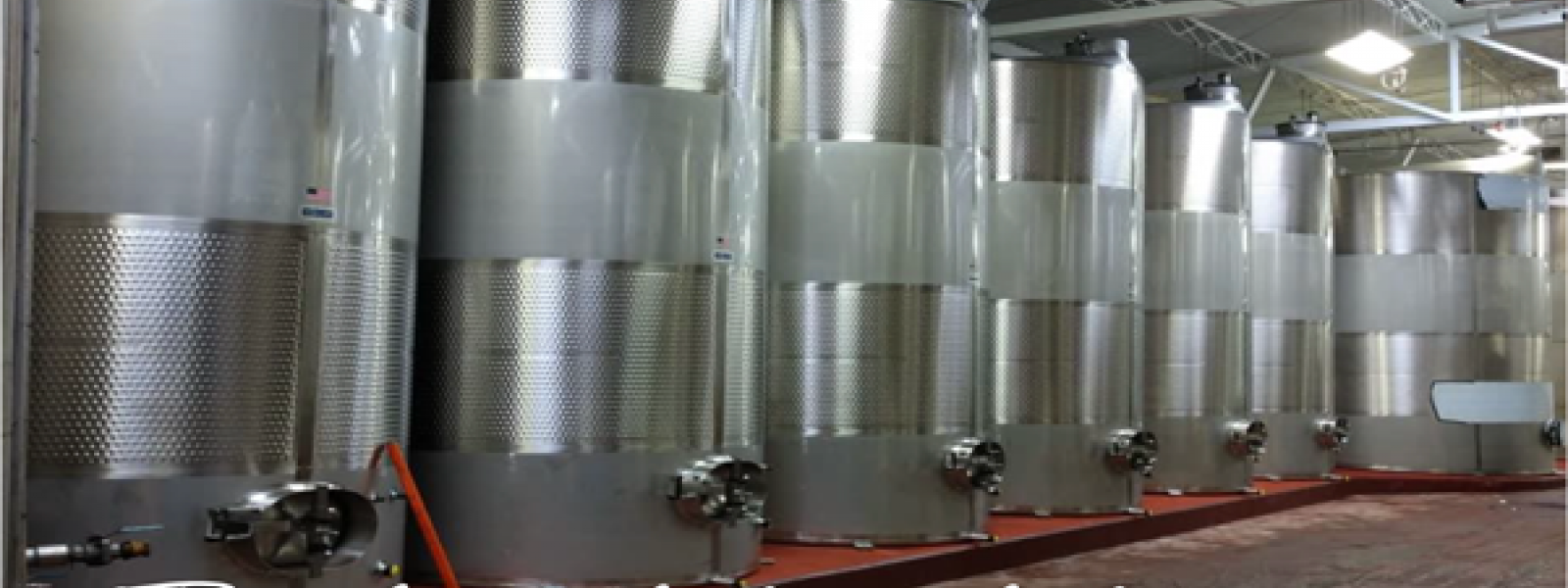While the vines in the vineyard are enjoying a much-needed rest, things at the winery continue to be very busy. Where Mother Nature left off in the vineyard, the winemakers and cellar crew take over with a host of detail-oriented tasks that dominate the winter months in the winery. During this time, the wines go through many phases and changes that need to be constantly monitored, which keeps the cellar crew hopping all winter long.
From the end of November right up until a few weeks into the new year, many of the new wines from the 2019 vintage underwent what’s called “malolactic fermentation.” Mostly all red wines and various white wines, like Chardonnay, go through this second fermentation, or ML. Malic acid is the tart acid in grapes also found in green apples. During the ML process, the tart-tasting malic acid in the wine converts to a softer-tasting lactic acid, which is also found in cheese and milk. This process softens the taste and texture of the wine and adds complexity, character and a creamier texture. Crisp white wines that do not benefit from ML, such as Riesling, Sauvignon Blanc and La Crescent, are prevented from going through this process through chilling, filtering and adding fining agents or enzymes. ML takes several weeks, and the entire course must be monitored quite attentively by the winemaking team.
Another critical winter task is monitoring chemistry levels and “topping off” wines in the over 450 wine barrels found in our cellars. A composite sample from each barrel lot is taken to the lab, where a panel of tests are run to check for pH levels, acid levels, sulfites and volatile acids. Adjustments are made as needed throughout the aging process. The cellar crew has the near-constant task of “topping off” each barrel with additional wine. Because oak barrels are porous, small amounts of wine (known as the Angel’s Share) evaporate through the barrel staves and are replaced with molecules of air. While this oxygen exchange aids in developing some flavor components in the wine, too much air dissolves those desirable complexities and leaves the wine thin and astringent.
Winter is the perfect time for the winemaking team to determine and perfect the new blends that will be bottled in the coming years. A great deal of thought and effort goes into creating new and exciting blends, many of which are only made available to Wine Club members! (You can read more on the art of blending on page 3 of this newsletter).
Wine would not make it into your glass without being racked, filtered and bottled. Racking is simply the process of separating the liquids from the sediment and dead yeast cells, where the wine is then filtered before bottling. The wines in the cellar are all at different stages in their journey from grapes to glass, making winter an exciting time and a great time to come for a tour!
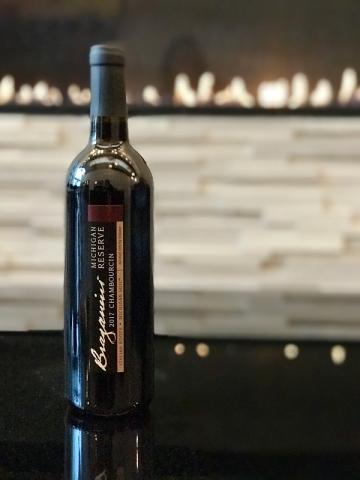
Oh, how we love Chambourcin!
Originally developed in France as a solution to phylloxera, this fascinating French- hybrid grape loves our cool climate along the Lake Michigan shore. When winemaking came to America in the 1800’s, scientists started tinkering with grape crosses better suited to the region. Many of the crossings paired Native American vines with European wine grapes. The goal was to create the natural disease resistance and cold hardiness of the American vines, with the delicious flavors of the European vines. Suited to our vineyard sites in Southwest Michigan, Chambourcin’s loose clusters don’t split with heavy rain common in our region and can withstand some light frost. Also, the vines are able to withstand the bitter cold temperatures of winter, making it consistently one of our favorite red varietals. As Bon Appetit recently declared, “Chambourcin is everything you want to be drinking right now.”
Chambourcin (pronounced SHAM-bore-sin) has an affinity to Cabernet Franc with bold fruit and pepper flavors, soft tannins, and ample acidity. The 2017 Braganini Reserve Chambourcin is made from grapes grown by Nathan and Julie Nitz in Baroda, and Ed and Phyllis Oxley in Lawton. It’s bursting with flavors of black raspberry, cherry and dried herbs. The balance of fruit and acidity makes it as food friendly as a Pinot Noir. Aged in French Oak barrels for 20 months, this wine has silky tannins and a toasty cocoa bean finish. Serve this wine with hardy foods like stews, mushrooms and steak. Try it with a piece of dark chocolate or a Goat Cheese Truffle (recipe on page 6) for a moment of bliss.
Petite Pearl. This is probably a wine you have not heard of before, but you will! Petite Pearl is a cold-hardy, red grape that was first introduced in 2010. St. Julian’s grower, Ron Nitz, planted this for us in 2015 and this is the first bottling of this exciting varietal.
The 2018 Braganini Reserve Petite Pearl is something unique in that it’s a barrel-aged sweet red wine. Most of our sweet wines never see a barrel, but rather are aged in stainless steel tanks. The Petite Pearl grapes harvested had a great amount of beautiful acidity and natural sugar, so Nancie decided to seize the opportunity to put this wine into neutral oak barrels. By doing so, the acidity, sugar and fruit flavors have the opportunity to fully integrate and enhance one another. Neutral oak aging maintains the fruit qualities in the wine while helping to soften the acidity and build complexity and a more lucious mouth feel. You will most likely notice strawberry, tobacco and menthol on the nose. Flavors of cherry, strawberry, dried plum and a touch of salted caramel can be found in this sweet wine, which has 6.5% Residual Sugar.
In addition to being a new varietal, what makes this bottle so special is that it’s sporting the new Braganini Reserve wine label. The Braganini family wanted to better showcase these reserve wines, making the label easier to read than the previous “BR” label with more information about the wine inside the bottle. The label is very elegant, mirroring the high quality and finesse of each wine in this line. Look for more wines in this new label in the coming year!
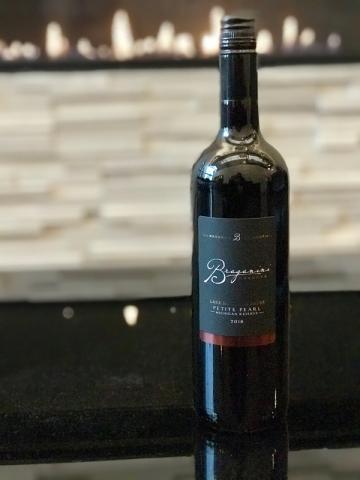
& our Winemaker, Nancie Oxley will answer.
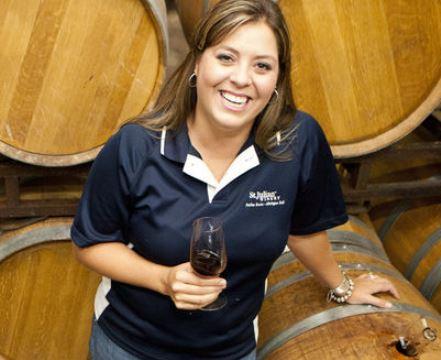
How long will my wine keep once the bottle is opened? Natasha McCormick, Minneapolis, MN
At my house, it’s a rare occasion that a bottle of wine is not emptied the same day that it’s opened! However, this a great question and I get asked this all the time.
Generally speaking, wines are meant to be enjoyed the same day they are opened. However, for those times you just want to enjoy one or two glasses and save the rest for later, the following guidelines will help you keep your wines fresh.
Bubbles: Just like a soda, sparkling wines need their bubbles to add to the freshness and flavors of the wine. Surprisingly, due to the effervescence and acidity, these wines have a pretty good shelf life. In order to keep the bubbles in your bubbly, I would recommend purchasing a sparkling wine stopper for your sparklings that are closed with a cork. For sparklings with a cap, just make sure to screw it back on tightly. By doing this, your wines will stay fresh for around 3-4 days in the fridge.
Lighter-bodied wines: Wines like FLiRT, Mountain Road Riesling, La Crescent, Sweet Revenge and Pinot Grigio can last 5-7 days, if their screw cap is tightly secured and they are placed into the refrigerator.
Fuller-bodied Red and White Wines: Wines like oaked Chardonnay, Chambourcin, Cabernet Franc and Cap Drain wines are best enjoyed the day they are opened. If you want to just have a glass, I strongly suggest you invest in a tool called a Vacu-Vin, which is a stopper that comes with a hand pump to remove all the air out of the bottle. You can purchase these anywhere, including all of our tasting rooms. Closed properly, they should last up to 5 days. If you want to get super tech, there is a new tool called a Coravin, that has a needle that pierces through the cork and extracts the wine while inserting argon gas in its place. Wines opened this way have been known to last for 10 months!
Fortified Wines: Wines like port and sherry have higher alcohol levels, which helps to preserve them. They can last opened up to a month in a cool, dark place with their cork closure firmly in place.
Located in the heart of southwest Michigan’s grape growing region, the Lake Michigan College’s Welch Center of Wine and Viticulture Technology is a ringing endorsement of the efforts to bring a world class wine and viticulture program to our region. St. Julian’s President, John Braganini, was central to supporting these efforts by sponsoring the John and Sarah Braganini Barrel Room to house the wine barrels for the college. As John said at the ribbon cutting, “Thanks to the efforts and commitments of the Welch family, and the Lake Michigan College Foundation, and countless other local growers and wineries, we now have the opportunity to recruit and educate winemakers, marketers and growers at a local level. We have the opportunity to staff our local wineries with students who embrace our methods, our styles and our community.” St. Julian is already reaping the benefits of this amazing new resource. Our new Enologist, Kristin Kohane, is one of the first to graduate the program. We are pleased to introduce you to our newest St. Julian team member!
Why did you decide to go to The Welch School of Viticulture? Kristin: I’ve always been interested in the wine industry and the process of winemaking. I have a previous degree in mathematics, but my previous job in accounting just wasn’t what I wanted to do long-term, so I decided to take that math background and do something different. Plus, I love wine!
What is your favorite part of being an enologist? Kristin: Besides tasting the wine? Enology is the science and study of winemaking, and as an Enologist, my job is to run the chemical testing on the wines. I really love all of the testing that I get to do each day. I run tests for pH, Total Acid, Volatile Acidity, Alcohol, Brix, Heat and Cold Stability and so many more! It’s never a dull moment.
What is something about your job that people might be surprised about? Kristin: There’s a lot of math and calculations involved for each wine. All of this determines how the final product is going to taste. I’m still in the learning process, but Kyle (Assistant Winemaker) and Nancie (Winemaker) are great teachers. I’m happy to bring my mathematical background and winemaking degree from Lake Michigan College to the table!
Which St. Julian wine is your current favorite? Kristin: I love our new “Signature Series” dry red blend that was made by our awesome cellar team. It’s a blend of 5 varietals and is being released to Wine Club members in May. It’s truly amazing and I’m excited for the members to try it! Otherwise, my go-to is our Cabernet Franc.
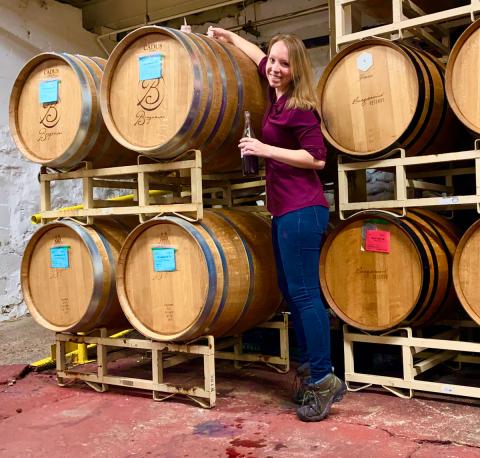
Art & Science Combined
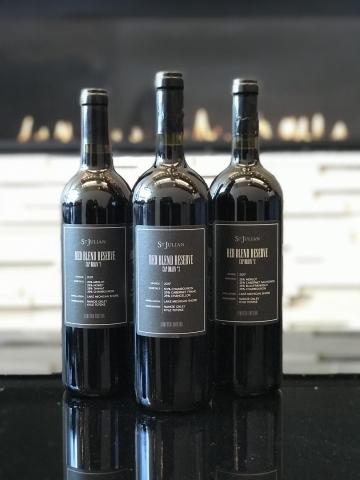
From conversations with our Wine Club members, we know that blended wines get people excited. Each year, Nancie and the winemaking team blend wines from different grape varieties to create amazing new flavor profiles for you to enjoy. When deciding which wines to blend together, winemakers use a combination of technical analysis and tasting. Each wine individually brings different flavors, aromas and textures that, when combined, complement each other. The goal is to make a new wine that is more complex with enhanced color, aromas, texture, flavors, body and finish.
Each year, we release new blends for our members to enjoy; wines like the Chardonnay/Pinot Gris, La Crescent/Traminette and Michigan Awesome wines. Perhaps the most highly anticipated blends are known as the “Cap Drain” wines. Nancie began making these dry red blends for members in 2013. She learned of this winemaking process during her internship with renowned Penfolds winemaker, Daryl Groom, while she worked at Geyser Peak Winery in California. So what is “cap drain?”
In red wine making, it’s necessary to ferment the juice and skins together. As the wine ferments, the skins rise to the top of the tank and form a thick “cap” or layer that floats on the top of the wine. When the wine is ready to be put into barrels, the tank is drained, and the thick layer of skins is immediately pressed to squeeze out any remaining juice. Wines created using the “cap drain” method are something unique. Instead of immediately pressing out the juice, the cap is allowed to sit for 48 hours in the bottom of the tank. During this time, little pockets of wine trapped in the skins continue to extract color, flavor and texture. Gravity naturally and gently presses this wine out of the skins where it is drained into its own barrel for aging. These individual “cap drain” wines are then blended together in different combinations to create cuvees (blends) from each vintage. From the 2019 harvest, Cap Drain barrels were created from 8 varieties of grapes that will be used to create blends for our red wine lovers in the coming years. We are pleased to release the latest cuvee from the 2017 vintage; Cap Drain Cuvee #3, which is a blend of Cabernet Franc, Chambourcin and Chancellor. If you would like to learn more about the art of blending, be sure to join us for the March Wine Club 101 at each tasting room location!
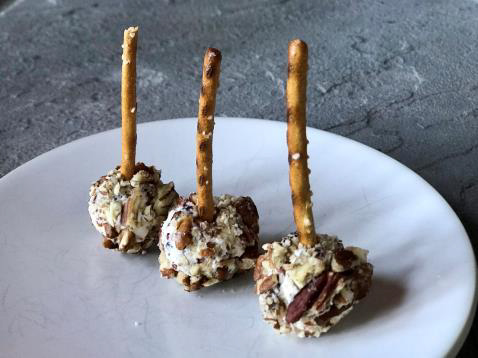
2017 BR CHAMBOURCIN + CRANBERRY GOAT CHEESE TRUFFLES
This is a simple and impressive appetizer. The sweet and savory flavors of the truffles pair with the bright fruit flavors of the wine.
1 eight oz. package of cream cheese
6 oz. crumbed goat cheese
¾ cup dried cranberries
2 cups toasted pecans
Salt and pepper to taste
Small pretzel sticks
Coarsely chop pecans in a food processor and set aside. Cut the cream cheese into cubes and toss into food processor bowl. Process until smooth. Add the goat cheese and cranberries and pulse until cranberries are slightly chopped (don’t over pulse). Add salt and pepper to taste. Roll cheese mixture into 1 inch diameter balls and place on baking sheet lined with parchment. Then roll each cheese ball into chopped pecans and place on baking sheet. Chill in refrigerator for 2 hours. Just before serving, insert a pretzel stick into the middle of each truffle.
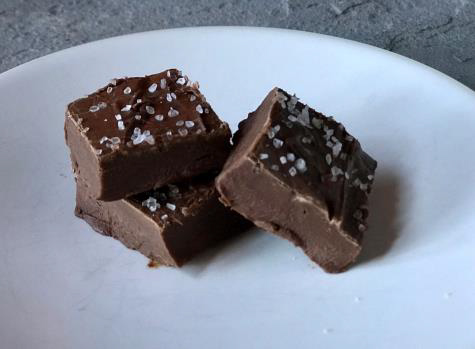
2018 BR PETITE PEARL + EASY CHOCOLATE FUDGE w/ SEA SALT
This easy chocolate fudge recipe has just 4 ingredients! The sweetness and acidity of the wine balances well with the sweet and saltiness of the chocolate.
2 cups semi-sweet chocolate chips
14 oz. canned sweetened condensed milk
1 tsp vanilla extract
Coarse sea salt
Line a 9 x 9 baking pan with parchment paper that covers the sides of the pan. Place the chocolate chips and sweetened condensed milk in a large bowl and microwave for one minute. Stir well to combine and allow the heat to melt the chocolate chips. If needed, microwave for another 30 seconds until the chocolate is completely smooth. Stir in the vanilla extract, then quickly transfer the mixture to the lined pan and spread evenly. Sprinkle the sea salt over the top of the chocolate so it rests on top. Let the fudge cool completely to room temperature. Cut into squares and store in an air tight container at room temperature or in the refrigerator.
- February 1st All Will Call orders Charged
- February 1st February Wine Club Newsletter emailed to you
- February 2nd All Will Call orders available for pick up
- February 3rd All shipping orders charged
- February 4th -6th All shipping orders packed and shipped
- April 20th – 30th Special request orders and additional wines will be added to your order and processed. Wines will ship as they are processed, unless you make other arrangements. You can change your shipping address, billing information or add wines to your order anytime before your order processes. Once your order processes, we can’t guarantee your requests. You MUST CONTACT WINE CLUB to make any changes or additions to your order information.
- May 1st All Will Call orders Charged
- May 1st May Wine Club Newsletter emailed to you
- May 2nd All Will Call orders available for pick up
- May 4th All shipping orders charged
- May 5th- 7th All shipping orders packed and shipped
Cancellations must be done in writing to wineclub@stjulian.com 30 days prior to the next shipment.
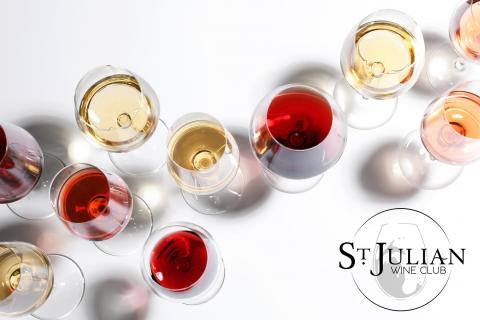
+ other exciting St. Julian events
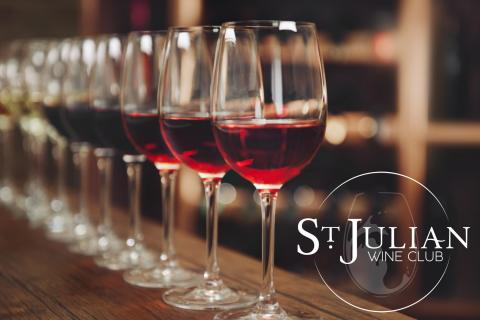
Wine Club members are invited to join us for free Exclusive Guided Tastings held in each tasting room. Taste and learn about the wines you love in a fun and relaxed setting. Each month will focus on a different topic. 2 people per membership. RSVP to the tasting room you wish to attend to reserve your spot. Walk-ins welcomed if space permits.
March - The Art of Blending
March 10th @6:00 pm Paw Paw
March 11th @ 6:00 pm Frankenmuth, Troy & Rockford
March 11th @ 7:00 pm in Dundee
March 13th @ 6:00 in Union Pier
April - What's in the Glass?
April 14th @ 6:00 pm in Paw Paw
April 15th @ 6:00 pm in Troy
April 17th @ 6:00 in Union Pier
April 22nd @7:00 pm in Dundee
April 22nd @ 6:00 pm in Frankenmuth, & Rockford
February 2020 Edition
VINEYARD SELECT RED
2017 BR Chambourcin
2017 Cap Drain #3
2017 BR Merlot
2017 Sol Rouge Cabernet Franc
2017 BR Merlot
Michgian Awesome Dry Red
SWEETER HARVEST
Shiver
2018 BR Petite Pearl
FLIRT
2019 BR La Crescent
Michigan Awesome Blue
PERFECTLY PAIRED
2017 BR Chambourcin
Shiver
2019 BR Mt. Rd Riesling
2018 BR Petite Pearl
2018 BL Chardonnay/Pinot Gris
2019 BR La Crescent
PERFECTLY PAIRED WHITE
2019 BR Mt. Road Riesling
Shiver
2018 BL Chardonnay/Pinot Gris
Michigan Awesome White
2019 BR La Crescent
2019 BR Mt. Road Riesling
VINEYARD SELECT
2019 BR Mt. Road Riesling
2017 BR Chambourcin
2017 Cap Drain #3
2018 BL Chardonnay/ Pinot Gris
2017 Sol Rouge Cabernet Franc
Michgian Awesome Dry Red
Read about a wine you didn’t receive? See a club that looks more tempting? Wine Club members have access to any wine, in any shipment, if available, and you can change your club you are in. Call to check availability of wines or to change clubs before August’ shipment! 800.732.6002 ext. 785 wineclub@stjulian.com
Explore the flavors and pairings of our wines with our tasting notes.

